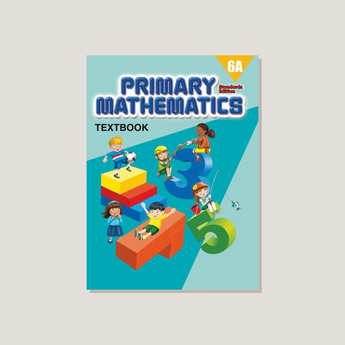Using visual aids to simplify struggles in primary math for young learners
Wiki Article
Revealing the most effective Faster Ways for Solving Math Troubles Quickly
In the domain of maths, performance is essential. Understanding shortcuts can change the method individuals approach troubles. From leveraging the distributive residential or commercial property to employing quick reproduction methods, these strategies boost both speed and accuracy. Additionally, recognizing patterns simplifies complex calculations. As one discovers these methods, they might uncover surprising insights that can alter their mathematical experience. What are the most efficient methods that can be easily incorporated into daily practice?Mastering Psychological Mathematics Techniques
Just how can one boost their computation rate without counting on calculators? Understanding mental math techniques uses a useful service. By using techniques such as damaging numbers into smaller, workable parts, individuals can streamline complex computations. When including two-digit numbers, rounding each number to the closest 10 can make mental enhancement much easier before adjusting back to the original worths.An additional efficient strategy is to exercise multiplication tables thoroughly, allowing fast recall of products (struggles in primary math). In addition, identifying patterns in numbers can promote quicker computations, such as using the properties of also and weird numbers. Normal practice via challenges and games can additionally refine these abilities, making psychological math extra instinctive
Inevitably, cultivating confidence in one's arithmetic capacities permits quicker decision-making and boosts total mathematical effectiveness. By including these strategies, any individual can substantially boost their estimation rate.
Using the Distributive Property
The Distributive Residential or commercial property is a basic principle in maths that streamlines estimations by allowing multiplication across enhancement or subtraction. It is vital for trainees to comprehend its application with useful instances, which can boost their analytic abilities. Additionally, recognizing common errors can even more strengthen their understanding and avoid mistakes in future calculations.Recognizing the Distributive Building
Mastering the distributive residential property can significantly streamline mathematical estimations. This essential residential or commercial property states that when increasing a solitary term by a sum or difference, one can disperse the reproduction throughout each term within the parentheses. As an example, in the expression a(b + c), one can revise it as abdominal muscle + a/c. This method not only improves computations however also boosts understanding of exactly how numbers communicate (struggles in primary math). The distributive building is especially valuable in algebra, where it aids in streamlining expressions and fixing equations. Additionally, it prepares for more intricate concepts, such as factoring and polynomial operations. By understanding the distributive residential property, pupils can create a strong foundation for tackling a vast array of mathematical challenges effectivelyPractical Instances Illustrated
Why is it vital to use the distributive home in sensible circumstances? The distributive building permits individuals to streamline complicated computations, making analytical more efficient. As an example, when computing the overall cost of multiple products, one can use the expression 5(2 + 3) to discover the complete price of five things priced at $2 and $3. By dispersing, the estimation becomes 5 × 2 + 5 × 3, yielding a quicker outcome of $25. An additional example remains in algebra, where simplifying expressions like 3(x + 4) can be achieved via distribution, resulting in 3x + 12. Such applications show the effectiveness of this residential or commercial property in different real-world situations, improving both speed and precision in mathematical analytic.Typical Errors to Stay Clear Of
The distributive home is an effective device in mathematics, common blunders can lead to incorrect outcomes. When pupils fail to remember to distribute the coefficient to each term within parentheses, one constant error occurs. In the expression 3(x + 4), stopping working to use the building correctly can lead to leaving out the multiplication, yielding a wrong response. One more error includes misapplying the residential property by adding as opposed to multiplying, especially when adverse indications are involved. Furthermore, trainees might neglect to simplify the outcome, which can rare mistakes made throughout circulation. Recognizing and staying clear of these pitfalls can enhance problem-solving efficiency and precision when making use of the distributive residential property in numerous mathematical contexts.Quick Reproduction Shortcuts
In the domain of fast reproduction shortcuts, methods like multiplying by powers of 10 and the increasing and halving approach stand out. These methods can substantially simplify calculations, making them extra available. Understanding these faster ways can enhance efficiency in mathematical analytical.Multiplying by Powers of 10
When increasing by powers of 10, the process ends up you can find out more being incredibly uncomplicated, as the procedure mainly entails changing the decimal point. Multiplying a number by 10 requires relocating the decimal one place to the right, while increasing by 100 necessitates a shift of two locations. This simpleness reaches larger powers, where each additional no indicates another decimal change. For example, multiplying 5.6 by 1,000 lead to 5,600. This look at here now technique substantially improves speed and accuracy, as people can quickly visualize the result without complicated calculations. Such performance is specifically beneficial in mental math or when time is limited, permitting fast analytical in various mathematical contexts. Grasping this strategy is crucial for any person aiming to boost their math skills.Increasing and Halving Approach
The Doubling and Cutting in half Method provides a reliable strategy for quick multiplication, specifically when dealing with even numbers. This technique entails changing a multiplication problem right into an easier type by either increasing one of the numbers and halving the various other. For instance, to determine 16 × 25, one can halve 16 to get 8 and double 25 to obtain 50, resulting in 8 × 50, which amounts to 400. This approach simplifies calculations, making them much more workable. It is particularly valuable in psychological math, permitting individuals to resolve problems promptly and properly. By leveraging this technique, pupils and professionals can improve their numerical dexterity, thereby boosting overall efficiency in mathematical jobs
Effective Division Techniques
Although department commonly presents obstacles for numerous learners, using efficient strategies can significantly simplify the process. One efficient approach is using compatible numbers, which includes rounding the divisor and returns to less complicated worths that are close to the initial numbers. This method makes psychological calculations a lot more workable. One more approach is the estimation strategy, where students can discover a harsh answer prior to executing the specific department, offering a beneficial standard for accuracy.
The long department technique remains a staple for splitting larger numbers. By breaking the procedure right into smaller, much more digestible actions, learners can preserve quality. The repeated subtraction technique can also be valuable, especially for those that battle with more abstract principles. By methodically subtracting the divisor from the reward, individuals can visualize the procedure. In general, these strategies can improve department skills, bring about quicker and more precise problem-solving capabilities.
Fast Addition and Reduction Techniques
How can students enhance their speed and precision furthermore and reduction? One reliable technique is to make use of mental mathematics methods, such as breaking numbers into smaller, much more manageable components. When adding 47 and 36, one can initially add 40 and 30 to obtain 70, after that include the remaining 7 and 6 to show up at 83. This approach simplifies estimations and lowers errors.One more method entails utilizing the number line for aesthetic students, helping them to see the connections in between numbers and boost their comprehension. Additionally, practicing with devices like flashcards can enhance fast recall of standard sums and differences.
Additionally, students can take advantage of acquainting themselves with benchmark numbers, such as rounding to the local 10, which enables quicker estimations. By integrating these techniques into their method, learners can substantially boost their rate and precision in standard math procedures.
Leveraging Evaluation for Quick Calculations
Evaluation serves as a powerful tool for enhancing calculation rate, enhancing psychological mathematics approaches effectively. By rounding numbers to their nearby entire values, individuals can simplify complex estimations, making it less complicated to reach an approximate outcome swiftly. For example, when faced with a problem like 198 + 267, rounding to 200 + 270 returns a quick quote of 470, allowing the solver to assess the precision of the last response.Estimation is specifically helpful in scenarios entailing multiplication and department. By rounding aspects to simpler numbers, one can quickly determine approximate products or ratios. This method not only conserves time but additionally helps in recognizing possible mistakes in estimations.
Acknowledging Patterns and Solutions
Patterns and formulas are essential devices in mathematics that allow individuals to fix problems extra successfully. Recognizing these patterns enables students to determine partnerships between concepts and numbers, which can streamline intricate computations. For example, acknowledging the square formula (ax ^ 2 + bx + c = 0) helps with fast remedies to various formulas.Patterns in series, such as math or geometric progressions, assistance people predict future terms without substantial computations. Solutions, on the various other hand, serve as shortcuts, enabling faster problem-solving by enveloping complicated partnerships into workable expressions.
Regularly Asked Concerns
Just How Can I Improve My Focus While Resolving Math Issues Swiftly?
To boost emphasis discover this while addressing mathematics troubles promptly, one can eliminate distractions, set particular goals, practice mindfulness techniques, take regular breaks, and maintain a consistent research regimen to boost focus and psychological clearness.What Apps or tools Help With Quick Mathematics Problem-Solving?
Numerous devices and applications, such as Photomath, Microsoft Mathematics Solver, and Desmos, improve quick math problem-solving. These sources supply detailed options, graphing abilities, and instantaneous responses, making them useful for experts and students alike.Exist Certain Math Shortcuts for Standard Tests?
Yes, details mathematics shortcuts for standard examinations include techniques like estimate, comprehending number residential or commercial properties, using the process of removal, and grasping common solutions. These techniques enhance rate and accuracy, boosting general test efficiency.
Just how Do I Practice Math Shortcuts Properly?
To practice mathematics shortcuts efficiently, people ought to consistently resolve varied problems, use on the internet resources, and involve in timed drills. Consistency and reflection on mistakes improve understanding, inevitably leading to enhanced rate and precision in computations.Can Shortcuts Be Applied to Complicated Mathematics Problems?
Shortcuts can certainly be put on complex mathematics troubles, although their efficiency varies. Mastery of foundational concepts and critical reasoning enables individuals to streamline processes, making it simpler to take on elaborate estimations successfully.By using strategies such as damaging numbers right into smaller sized, convenient components, individuals can simplify intricate calculations. Furthermore, acknowledging patterns in numbers can promote much faster estimations, such as using the homes of even and strange numbers. Evaluation serves as a powerful device for enhancing computation speed, complementing mental mathematics strategies effectively. By rounding numbers to their nearest entire worths, people can streamline intricate estimations, making it less complicated to get here at an approximate outcome swiftly. Acknowledging these patterns enables learners to recognize partnerships in between numbers and ideas, which can streamline complicated calculations.
Report this wiki page